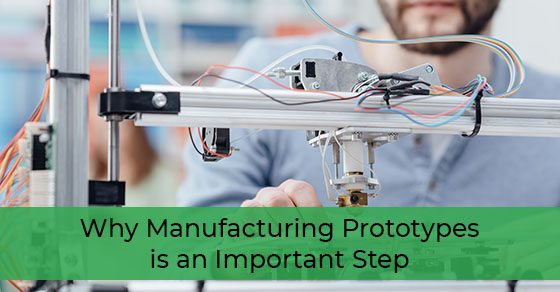Why Manufacturing Prototypes is an Important Step
Some people may claim that manufacturing prototypes is not an important step, or not necessary at all; however, prototype development is a crucial and necessary step, irrespective of the item being manufactured. Below, are just some of the reasons why manufacturing prototypes is an integral part of the design process of electronic components.
Testing and Evaluation
In reality, a simple drawing of a design, or even having an idea for one, may be quite different from the actual real world where the unit will be utilized. However, by using a prototype, a company can evaluate a real, tangible version of the product they wish to launch and determine which components are worth using and which components should be discarded.
Moreover, prototype development will allow R&D to find issues that they would simply not be able to detect had they not created a prototype. Beyond evaluation comes the benefits of prototype testing. That is, the research and development team will have ample opportunity to perform qualitative testing on the product before they initiate the full production phase. Prototype testing is imperative, as it can save a company thousands, if not millions of dollars, down the line, as well as save time and avoid revisions.
Imagine if a company produced a hundred thousand units of a product, only to find that a crucial component of the device was shoddy or defective in its craftsmanship. This would cause a recall of the product and likely a public apology to customers. Also, while prototype testing is paramount for multinational conglomerates, it is arguably even more important for smaller companies, such as startups, as a single omission or miscalculation can spell disaster and bankrupt a small company with limited resources.
Clarify Production Problems and Expenditures
Prototyping before production commences allows an enterprise to review the production process and determine if any of the steps in the chain need to be revised or amalgamated. The end result is that the production process will be streamlined, while also ensuring that production expenditures will be as low as possible.
In some instances, a company may discover certain manufacturing processes that may cause issues for the finalized product in the future or may notice certain difficulties arise during the production phase. In either scenario, the company will be able to notice the issue sooner than if they were to detect it during the production of the final product. In sum, prototyping allows R&D to find the absolute best method or means of production; from optimal silicone moulds and die-casts to superlative stamped metal and injection moulding.
Help Sells Product
As mentioned, creating a prototype allows a company to determine if there are any issues with the design, as they will be able to physically manipulate a working model of the product that they want to produce in the future. However, developing a prototype will also make it easier for a company to sell their prospective product to potential investors and customers, as they will also be able to see and hold the item during the sales pitch.
A prototype is a physical manifestation or representation of the concept that prospective investors can manipulate. More often than not, potential investors will look elsewhere for projects to invest in if they are unable to grasp or manipulate a prototype, as it can be hard for most investors to get behind a concept on its own and sign a purchase order.
Furthermore, the input of the final target demo should also never be taken for granted. While testers and designers may marvel at a prototype, the final target customer may not like it or may have issues with certain aspects of the prototype. As the famous adage goes, “the customer is always right”, so they must always be considered during prototype development.
The good news is that external testing and focus groups can be arranged so that prospective customers can provide their input on the prototypes that the company designs. In the end, the customer must like the product, because failure to get behind the product will ensure that they will not purchase it and that they will likely switch to another provider to meet their needs.
The Importance of Patents
In some cases, products that are very unique or new will require patents for protection. There have been noted cases where a company designed and manufactured a good product, only to have a competitor knock off their product because they failed to obtain a utility or design patent to protect key components of the original product.
Having a working prototype may mitigate such issues, as it allows a company to meet a patent lawyer and work together to determine what aspects of the design can be patented. In fact, the company may discover that certain aspects of the design and the prototype actually violate patents that have already been issued to other competing companies.
As such, a company whose prototype violates existing patents will be able to change the final product enough so that they can avoid a lawsuit in the future, while also protecting certain design elements of their product that can actually be protected from being duplicated or stolen by competitors.
To learn more about why prototyping is an important step in manufacturing, call Circuits Central at 888-821-7746 or contact us here.

